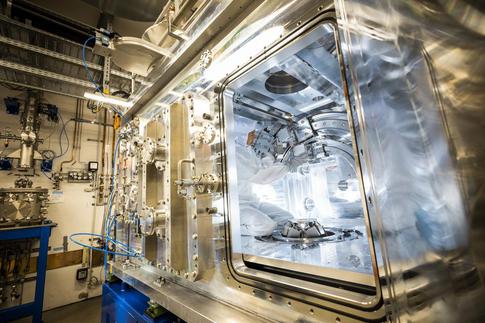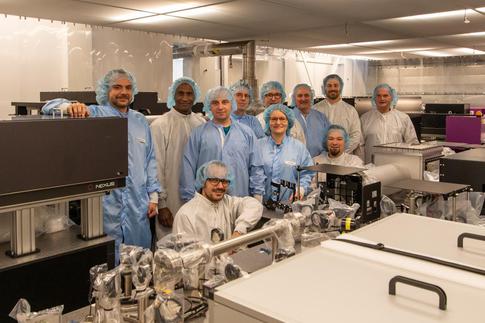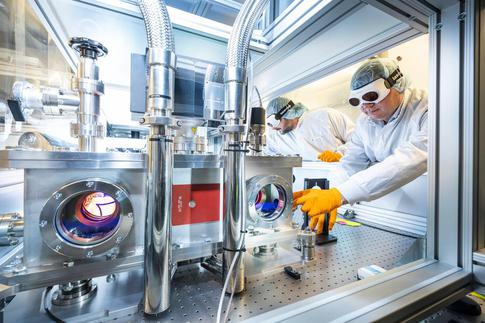XFEL: Super laser delivered to European XFEL
Super laser delivered to European XFEL

The HED instrument at European XFEL. Copyright: European XFEL/Jan Hosan
A keenly awaited piece of high-tech equipment has been delivered to European XFEL. The high repetition rate, high-energy laser, DiPOLE 100-X, was developed in the UK by scientists and engineers at the Science and Technology Facilities Council’s Central Laser Facility (CFL) as part of the UK contribution to the facility. This unique laser, developed within the framework of the HiBEF user consortium, will be used at the instrument for High-Energy Density (HED) science at European XFEL to generate extreme temperatures and pressures in materials. The atomic structure and dynamics of these extreme states of materials can then be studied using the extremely bright and intense X-ray pulses produced by the European XFEL. This experimental set-up will enable scientists to create conditions similar to the interior of exoplanets with temperatures of up to 10,000°C, and pressures of up to 10,000 tons per square centimeter - similar to the weight of 2000 adult elephants concentrated onto the surface of a postage stamp!
Scientists have already discovered more than 3000 planets outside our own solar system. The range of element composition, mass and pressure, and temperature conditions found in and on these planets is diverse, however as yet, largely unexplored. Until recently it was not possible to simulate similar conditions on Earth. Now, recently developed high-pressure experiment techniques, combined with the parameters of the new High Energy Laser and the intense X-ray pulses generated by European XFEL, will enable the type of X-ray diffraction and spectroscopy experiments needed to study these planets for the first time.

The HED team inspect the high-energy laser upon its delivery to European XFEL at the beginning of 2020. Copyright: European XFEL
“It is thought that the form of elements such as carbon and iron found on some of these exoplanets does not exist elsewhere” says Ulf Zastrau, group leader at the instrument for High-Energy Density science at European XFEL. “Until now, it has not been technically possible to study these fascinating worlds, because we could not create such extreme temperatures and pressures in the lab. Now, with the arrival of the new High-Energy laser at European XFEL we are a step closer to being able to study the behavior, composition and conditions of these planets. This really opens up an entirely new field of scientific exploration.”
Prof. John Collier, CLF Director, said: “I am delighted that CLF’s latest generation of DiPOLE laser technology is being installed on the European XFEL. The unique combination of DiPOLE laser radiation with the XFEL beam will transform laboratory astrophysics and the study of matter in extreme conditions. DiPOLE’s high repetition rate will deliver a step-change in the speed of data collection, producing orders of magnitude improvements in the accuracy of our measurements and the ability to detect previously unobservable effects.”

Scientists and engineers work on the first laser to be installed at the HED instrument, a 400 TW high-intensity laser system, that was installed in 2018. The installation and commissioning of the second laser to be installed at HED will continue until 2021. Copyright: European XFEL/ Jan Hosan
A team of scientists and engineers from European XFEL and CLF have begun installing the DiPOLE 100-X laser in the underground laser hutch. It is planned to make the system available for the first user experiments next year.
The High Energy laser is the second laser system to be installed at the HED instrument. The commercially available 400 TW high-intensity laser system, a contribution of the HZDR as part of the HIBEF user consortium, was installed in 2018.
----
Construction of the DiPOLE 100-X laser was funded by joint equipment grants from the Science and Technology Facilities Council (STFC) and the Engineering and Physical Sciences Research Council (EPSRC).
Further reading:
HIBEF user consortium
HED at European XFEL
